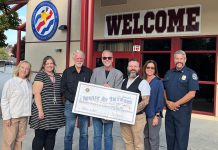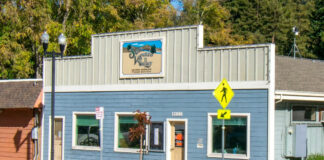If you haven’t heard about the benefits of eating locally grown food, if only from a bumper sticker, then you must be new to Santa Cruz County.
We’re lucky to have so many sources of locally grown produce, not to mention a mild climate that allows year-round backyard gardening (apologies to those living under a redwood canopy).
Truth is, food grown in other parts of the country or world not only uses a tremendous amount of energy to ship to our plates, but also undermines regional food security and does nothing for the local economy. The average meal has traveled 1,500 miles from farm to fork, while only 9 cents of every dollar spent at supermarkets actually goes to the farmers.
There are three main ways to reduce your carbon footprint, support local businesses, fortify our regional food security and enjoy the freshest fruits and vegetables you’ll ever eat:
– Join a CSA (community-supported agriculture).
– Shop at your local farmers’ market.
– Grow fruits and veggies in your home garden.
A CSA subscription, also referred to as a “farm share,” usually involves an upfront payment in exchange for a box of seasonal produce (some include eggs and other items) each week throughout the growing season.
I personally have subscribed to both Live Earth Farm and (at present) Route 1 Farms.
Live Earth offers a staggering variety (and the best strawberries I have ever tasted). Route 1 offers a lot of greens and herbs, along with nice surprises, such as artichokes and dried persimmons (a revelation — better than candy).
Other CSAs accessible to SLV residents include Camp Joy, the Homeless Garden Project, Lindencroft Farm and Freewheelin’ Farm. I apologize in advance for any CSAs I might have failed to mention.
Alternatively, you can buy produce from many of the same farms, plus others, at your local farmers market. The Felton Farmers Market, at the St. John’s Church parking lot on from 2:30 to 6:30 p.m. Tuesdays, begins its season in May. The Scotts Valley Famers Market, at the community center across from the library from 9 a.m. to 1 p.m. each Saturday, is open year-round.
In addition to farm-fresh produce, you can find locally caught fish and sustainably raised meat from nearby farms. Many vendors will accept local checks, and all of them accept food stamps.
For my 5-year-old daughter, it’s much more than just an open-air market — it’s a social event. She likes to spend time with friends while enjoying a Hawaiian shaved ice. I also enjoy seeing friends and neighbors, listening to the live acoustic music and ordering dinner from the crepe stand. And it’s nice to know that the farmers are right there to answer any questions I may have.
If you’re lucky enough to have a sunny lot, our climate allows for vegetable gardening all year round. In my limited experience, I’ve actually had more success in the winter — fewer pests and more rain (usually).
The backyard garden offers more than just produce; it also helps us save some money and teach our kids about where food comes from.
Plantworks and Mountain Feed and Farm Supply have everything you could ever need for your garden, each offering professional advice. Mountain Feed also sells supplies for backyard chickens, bee-keeping and other homesteading endeavors. I haven’t personally shopped at Scarborough Gardens in Scotts Valley, but they also sell garden supplies and plants.
We can’t always eat within a tight radius, but we should all recognize the enormous value of our local farmers and others helping to lessen the environmental impact of our daily meal.
– Steve Tanner lives in Ben Lomond with his wife, two young children and dog. When not commuting to the South Bay, he can be found digging in the garden or hanging out with his family. He is a member of Transition SLV, www.transitionslv.org.












